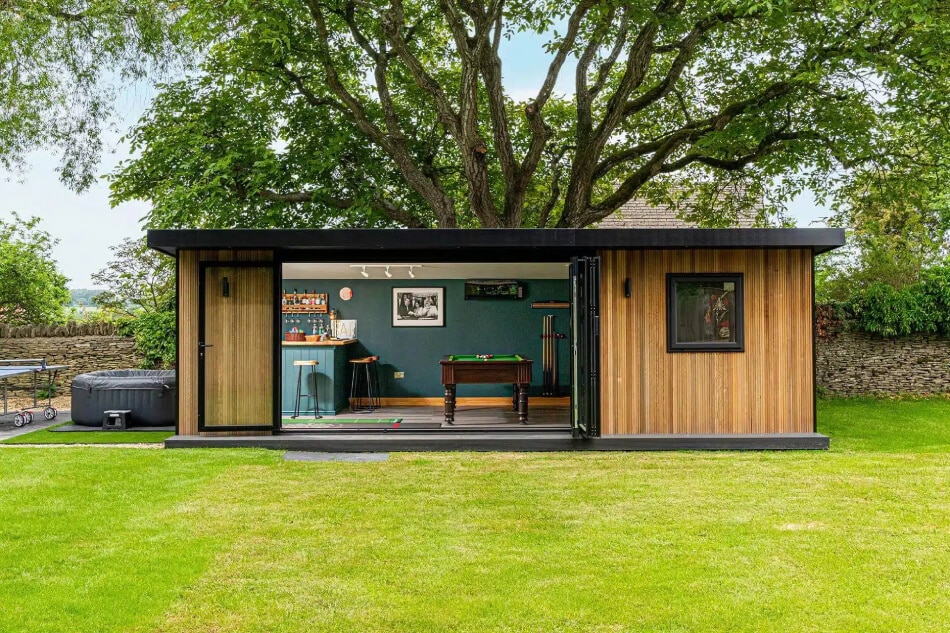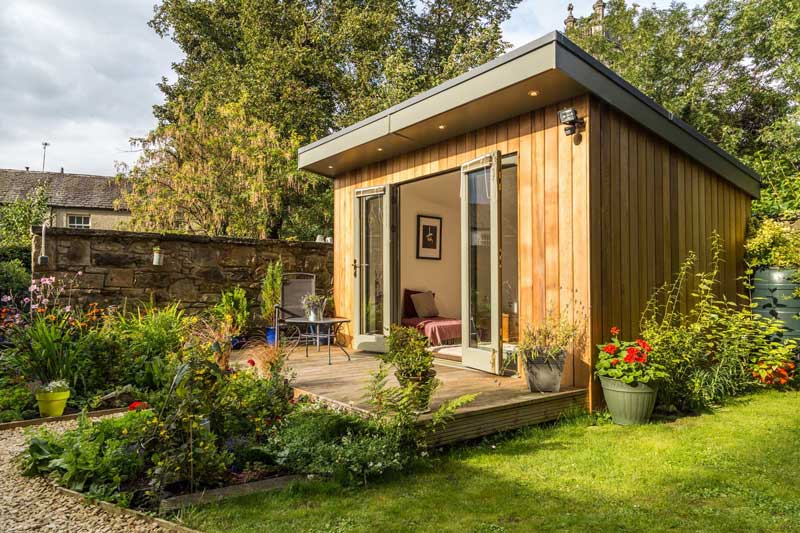Great Ideas On Planning Permission On Garden Conservatories
Great Ideas On Planning Permission On Garden Conservatories
Blog Article
What Permits Are Needed For The Construction Of Garden Rooms Or Similar Structures Within Conservation Zones?
To protect the beauty and character of conservation areas, when building extensions, garden rooms or conservatories within these designated areas, certain restrictions apply. Here are the main considerations for planning permission in conservation areas: General Restrictions
A building or extension that would otherwise fall under permitted development rights may still require permission for planning in an area of conservation. This applies to gardens, sheds, and other outbuildings.
Size and Scale:
The planning authority may require approval for any structure in any size if the size is considered as detrimental to the conservation zone. In designated zones, there are more strict limitations on the size and design of new structures or extensions.
Location:
Planning permission is usually needed for extensions and constructions that are located on the side or front of the property. If rear structures are seen in public areas or affect the area's character They may require permission for planning.
Materials and Design
Design and material selection are crucial in conservation areas. The materials utilized for any extension or new construction must be in accordance with the architecture or historical interests of the area. To ensure these standards are satisfied, planning approval is required.
Demolition:
Planning permission is generally needed in conservation areas to ensure that the changes are in keeping with an area's unique nature.
Height Restrictions
In conservation zones, there are more strict height restrictions. Anything taller than 2.5 meters, and especially within 2 meters of the boundary will require planning approval.
Impact on surrounding areas
Planning permission could be needed when a proposed construction extension, expansion or alteration to the visual or setting of the conservation area is likely to affect negatively its appearance and the surrounding environment.
Use of the building:
If an outbuilding or garden exceeds the dimensions however, it might still need planning permission based on the purpose for which it was designed (e.g. as a studio, home office or a room that is habitable).
Expansions and Alterations
Planning permission is generally required for extensions that exceed specified volume or size limits or alter the exterior appearance. This includes conservatories and other major alterations.
Curtilage Structures:
Planning permission is required for buildings that are that are located within a conservation zone. This applies to expansions, outbuildings or alterations.
Protected Trees
Trees are protected within conservation areas. The consent for tree works could be required if you plan a project that will affect trees.
Local Authority Guidelines
Local planning authorities will set guidelines and restrictions specific to each conservation area. These can include detailed criteria on what is acceptable and what isn't specific to the particular characteristics of the particular area.
In essence, obtaining permission to plan in the conservation area requires a detailed assessment of how the proposed garden room or conservatory, an outhouse, garden office, or extension will impact the historic and architectural character. It is important to consult the local authority before you begin in the process of making plans for your plan. This will ensure it is in line with the relevant guidelines and regulations. Follow the top rated do you need planning permission for a outside toilet for blog examples including gym outhouse, out house, garden office hertfordshire, garden buildings , outhouse building, armoured cable for garden room, what size garden room without planning permission, Tring garden rooms, garden room permitted development, garden room planning permission and more.
What Planning Permissions Is Required For Garden Rooms Etc In Regards To Listed Buildings?
There are more stringent rules and considerations when planning to construct garden rooms or conservatories on the site of a historic structure. There are a few important things to consider when preparing such projects.
Any extension, alteration or new construction within the curtilage of a listed building typically requires a listed building consent as well as planning permission. These are because any changes could affect the character and significance of the property listed.
Historical Character and its impact
Planning permission is required to build any extension or new structure that could have an impact on the historical appearance or character of a listed structure or setting. This includes garden structures as well as outbuildings.
Design and Materials
The new structure and its materials must respect the historic and architectural value of the historic building. It may be necessary to design bespoke plans and the usage of traditional materials which requires approval for planning.
Nearness to the listed Building
New constructions built near historic sites are scrutinized for their impact on the setting and appearance. The character of the building will not be affected if planning permission is obtained.
Size and Scale
The dimensions and size must be proportional to the structures listed. A larger structure is more likely to require an in-depth assessment and planning permit.
Location of the Property:
The position (whether it be in front, behind, or on the other side of an listed structure) can affect the necessity for a permit. The visible locations, or those that impact key views of the structure, usually need to be evaluated more thoroughly.
Internal Changes
Even if the structure is demolished, any internal changes to the listed building (such as the construction of new access points) also require listed building consent and planning permission.
Conservation Area Overlap
There are additional restrictions when the building is listed and in the conservation area. Planning permits are required to comply with both the conservation zone regulations.
The Building's Use:
Planning permission may be needed in relation to what the garden room or outbuilding is going to be used. The authority for planning will pay more attention to the use that indicates significant changes, such residential or commercial use.
Impact on structural structure:
Any building that may affect the structural integrity of the listed building needs permission for planning and listed building consent to ensure that the old and new structures are safe to be integrated.
Local Authority Guidelines
Local authorities have guidelines that specify the type of construction and modification is permissible for listed buildings. These guidelines must be followed with planning permission.
Professional Assessments
Conservation experts often need to conduct detailed evaluations of the proposed work to heritage-listed buildings. These assessments determine the appropriateness and the support for proposed changes.
Summary A: Planning permission and listed building consent is required nearly always when building garden rooms, conservatories or outhouses. The same is true for extensions or garden offices as well as garden offices that are attached to listed properties. Get in touch with your local planner and heritage professionals prior to beginning the process of planning to ensure that you are in compliance with all relevant regulations, and to preserve historical and architectural integrity. Check out the top rated heater for log cabin for website info including garden office electrics, garden room or extension, garden rooms near me, outhouses, garden room conservatory, how to get power to a garden room, garden room planning permission, do you need planning permission for a garden room, garden office, outhouse builders and more.
What Are The Restrictions On Location For Garden Rooms, Etc?
The area of the garden rooms or conservatories, along with outhouses, office buildings, and even garden offices can be a major factor in determining if permission for planning is required. Here are the most important location requirements to take into consideration.
If the building is located within two meters of a property boundary, it must not be taller than over 2.5 meters. If the height of the building exceeds this limit then planning permission is required.
Front of the Property
Planning permission is typically required for any structure that is constructed in front of the house's main elevation (the side that faces the front) because allowed development rights don't permit for forward extensions.
The property's side:
If the side extension extends beyond the existing wall, it may require permission to plan.
Rear of Property
Extensions to the rear and garden rooms situated at the rear of the property are subject to size and height restrictions. If they exceed the permitted limits for development, planning permission will need to be sought out.
Designated Zones
In conservation areas, Areas of Outstanding Natural Beauty (AONB), National Parks, as well as World Heritage Sites, stricter control is in place. Planning permits may be required for any new construction regardless of the size.
List of Buildings
List building properties are subject to stricter regulations. Wherever the structure is located on your property, you'll need to get planning permission and approved building permits for any extensions or modifications.
Green Belt Land:
To protect open space, development on greenbelt land is severely restricted. A special permission is often required for any new construction, or significant modifications.
Flood Hazard Areas
In the event that the property is located in an area at risk of flooding, there are additional regulations to ensure that the new structure doesn't exacerbate the risks. Planning permission, and perhaps a flood risk assessment might be required.
Urban vs. Rural settings
Urban and rural areas have different rules. Rural homes are more flexible in regards to the size and location of outbuildings. The rules vary greatly.
Highways and Public Rights of Way
The structure might require planning permission to ensure that it doesn't block views, access or security when it is located near highways, roads or other rights-of-way for public use.
Shared Ownership or Leasehold
If you own a property which are part or leasehold or share ownership schemes You may have to get additional permissions, whether from the managing entity or freeholder, or planning permission, depending on your local regulations.
Contiguous to Other Structures
Planning permission is required when the new structure will be built adjacent to an existing structure or structure, in particular those that are situated on adjacent property. This is to ensure that there is no negative effect on the land or buildings nearby.
To get advice on the specifics of your property's situation and location, it's best to contact your local planning authority. Regulations can vary significantly based on local policies and the need to ensure that you comply with all applicable limitations is vital to avoid legal problems and possible fines. Take a look at the recommended armoured cable for shed for more tips including insulated garden buildings, garden room planning permission, ground screws vs concrete, what is a garden room, outhouse uk, costco outbuildings, insulated garden rooms, armoured cable for garden room, garden room, garden office electrics and more.